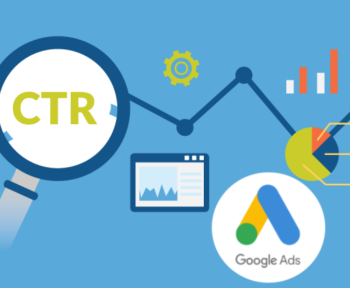Table of Contents
What is spam?

Spam is any email message that contains commercials. In most cases, spam is unwanted, sent on a very large scale and there is a problem sending emails to users. 95% of emails sent are estimated to be spam.
Spammers, also known as messengers, usually buy lists of email recipients or collect email addresses from various parts of the web, including information forms as well as public sites with email lists. Additionally, spammers may use computer programs to “guess” email addresses at random. Learn about email autoresponders from here.
Effects of spam
In addition to cluttering your inbox and wasting time and hassle, there are other reasons to control spam. First, spam is often the source of computer viruses. Malicious people who create viruses disguise themselves as emails from legitimate advertising sources to encourage them to open or download content.
Second, spam is often used as a weapon of theft, fraud, or scams. Emails that mimic real companies asking for your login information, personal data, or payment information cost innocent customers every day.
How to avoid Spam?

The easiest way to protect yourself from spam-related headaches is to learn how to avoid them completely. Here are some of the most effective methods!
Use Spam Filter: Most email accounts provide a spam filter. However, activating this feature and setting its parameters depends on the user. Take the time to make sure there is a spam filter for all email accounts and check or adjust if the settings are enabled. Also, as soon as an email that you identify as spam appears in your inbox, take the time to identify it as spam instead of deleting it. Email marketing terms.
Create a disposable email address: If you have to give your email to publicly listing and selling sources, or if it is usually just questioned, it is a good idea to have a non-reusable email account for this purpose. Generally, this is an email used only for spam or sign-ups, not important or personal emails.
Have a Unique Email Address: As mentioned earlier, many spammers use programs that randomly generate email addresses based on “predictions”. These are commonly used emails (e.g. John.smith@emailserver.com). To keep your account “unexpected”, use a combination of letters and numbers and make it as unusual as possible.
Unsubscribe: When you sign up for various content on the web, you are often given the opportunity to unsubscribe from the Email box. Make it a habit to do this in every sign-up you make. Also, many online stores, merchants, and advertisers have instructions below the email about unsubscribing if you want. Doing so will help remove your email address from many spamming lists.
Hide your Identity/Email Address: Many people become targets for spam by posting, chatting on the web, and doing other online tasks with their email addresses. When commenting on blog posts, posting in forums, chatting, or other public communications, do not publish your email address, do not use a signature, or create a screen name as your email address. If you must disclose your email address to anyone on the public site, use a non-reusable email address instead of your primary email address.
Learn how to get rid of spam blacklists and see if you can add one:
If the email does not reach its destination, there may be several reasons for this. The most common is that someone or several people have labeled your email as spam and brought your email to one of those lists.
A good way to avoid appearing as spam is to add people you know, as some mail codes will check your listing and help you get out of the blacklist.
Spam Filter Glossary

Safe List: The type of people you want to receive emails with.
Whitelist: There is another way to call it the Safe List.
Blacklist: Addresses you do not want to receive email. Some of these spammers use known email names to deceive you. This is called spoofing and makes it harder to fight spam, but you can do it if you are careful and diligent.
Spam Score: This means that some software estimates the type of spam you receive from a specific email. An email will be blacklisted or whitelisted, depending on how high it scores. Usually, you have a message asking if you want to mark the email as spam.
Junk mail: This is basically spam or unwanted mail. Any junk mail that you do not request or that you do not seem familiar with will be considered.
Junk folder: Your spam emails go here before they are permanently deleted from your storage. This will allow you to retrieve non-spam and accidentally hit emails on that list.
Spam: All unwanted emails are spam. It is similar to junk mail but spam is a common term for this type of mail.
Filter your folders and check that you are receiving emails in the right places.
Check out the following instructions for anti-spam:
Norton Antispam

Antispam works with Outlook Express, Netscape, Yahoo, and MSN / Hotmail to block unwanted emails before they reach your inbox. Learn about practical email marketing Ideas.
McAfee is a spam killer
Spam blocker works with Outlook, Outlook Express, MSN/Hotmail, and POP3 accounts to block spam before it reaches your inbox.
Lo Teluk also has a spam-only folder. It has a very good system that determines what is spam and what is not spam, but the best thing you can do is make sure that our addresses always have an instant entry in your mail whitelist inbox. All you have to do is click on “Secure Sender” to allow any address and add only the email you want.
Hope! You find this information useful. Don’t forget to share and leave Your comment. Thank You.





8 Comments
Muzi
Nice article
Francine
Hello my family member! I wish to say that this post is awesome,
great written and include almost all significant infos.
I’d like to peer extra posts like this .